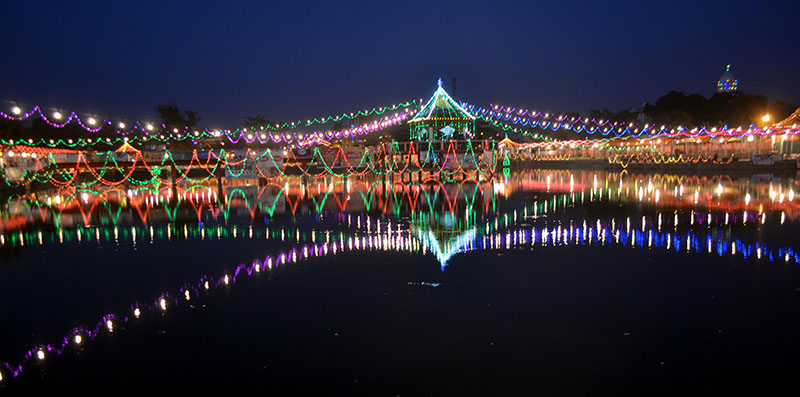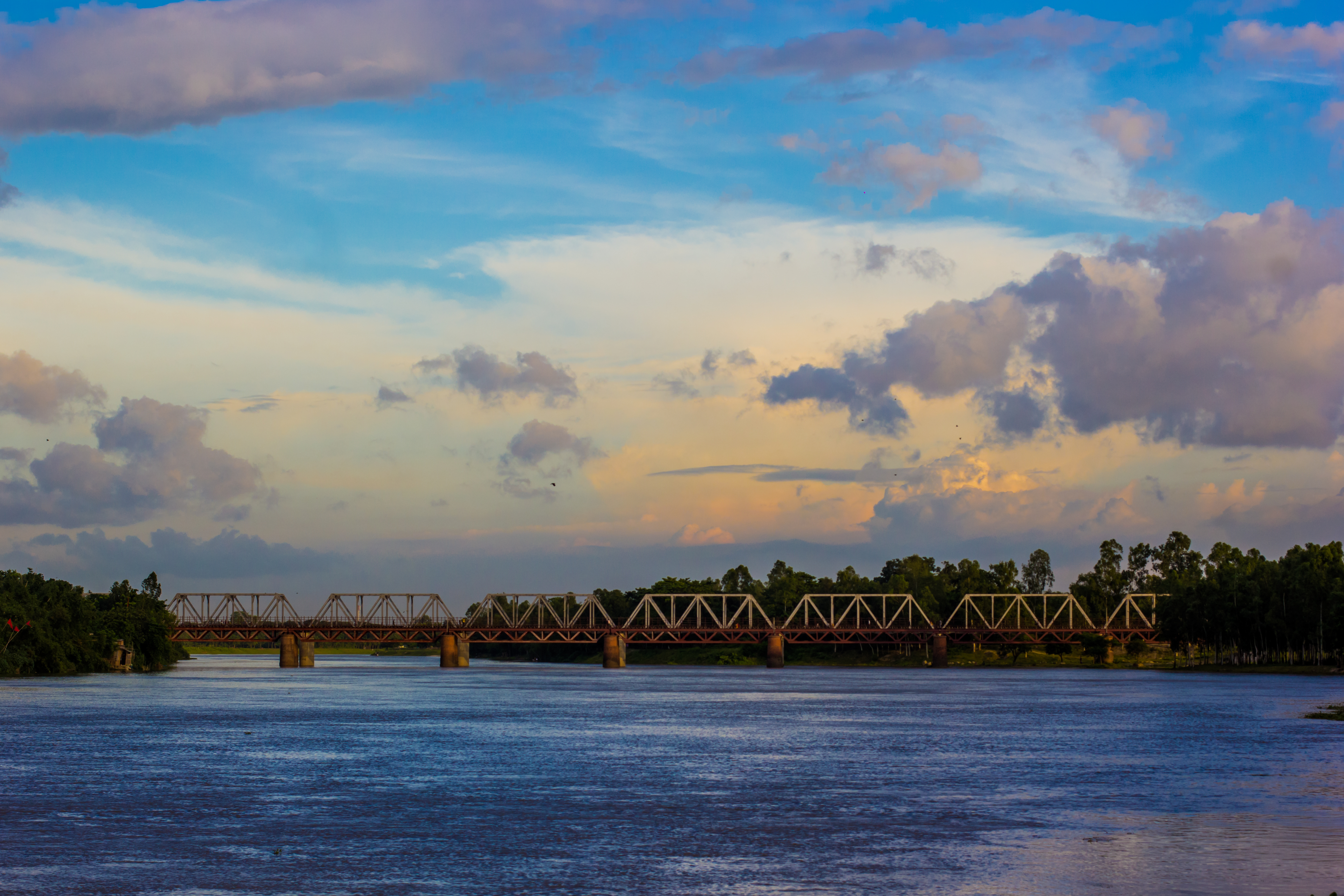|
Debiganj Upazila
Debiganj ( bn, দেবীগঞ্জ) is an upazila of Panchagarh District in the Division of Rangpur Division, Rangpur, Bangladesh. Geography Debiganj Upazila is located at . It has 31532 households and total area 309.04 km2. Demographics As of the 1991 Bangladesh census, Debiganj has a population of 159902. Males constitute 51.02% of the population, and females 48.98%. This Upazila's eighteen up population is 77660. Debiganj has an average literacy rate of 24.8% (7+ years), and the national average of 32.4% literate. Administration Debiganj Upazila is divided into ten union parishads: Chengthi Hazradanga, Chilahati, Dandopal, Debiduba, Debiganj, Pamuli, Shaldanga, Sonahar Mollikadaha, Sundardighi, and Tepriganj. The union parishads are subdivided into 108 mauzas and 101 villages. Education According to Banglapedia, Nripendra Narayan Government High School, founded in 1906, is a notable secondary school. Aladini Government Girls High School is a secondary govt high ... [...More Info...] [...Related Items...] OR: [Wikipedia] [Google] [Baidu] |
Nripendra Narayan Government High School
Nripendra Narayan Government High School ( bn, নৃপেন্দ্র নারায়ন সরকারি উচ্চ বিদ্যালয়) is a secondary school located in Debiganj, Debiganj Upazila, Panchagarh District, Bangladesh. It was founded in 1906 by Nripendra Narayan, Maharaja Nripendra Narayan. This school is also known as Debiganj N.N. Govt. High School (N.N School). Secondary School Certificate examination under Dinajpur Education Board. History Nripendra Narayan Government High School is founded in 1906 by Nripendra Narayan Bhup Bahadur, Maharaja of Cooch Behar. The school was founded on the east bank of Korotoya River. Originally named Nripendra Narayan English School, the name was styled as to a Bangla version. At that time it was a highly regarded school in Jalpaiguri District. Student also came here from Asam, Cooch Beher, Jalpaiguri and Darjiling. There were two residential boarding for the student. One was for the Muslim students and other was ... [...More Info...] [...Related Items...] OR: [Wikipedia] [Google] [Baidu] |
Upazilas Of Bangladesh
An ''upazila'' ( bn, উপজেলা, upôzela, lit=sub-district pronounced: ), formerly called ''thana'', is an administrative region in Bangladesh, functioning as a sub-unit of a district. It can be seen as an analogous to a county or a borough of Western countries. Rural upazilas are further administratively divided into union council areas (union parishads). Bangladesh ha495 upazilas(as of 20 Oct 2022). The upazilas are the second lowest tier of regional administration in Bangladesh. The administrative structure consists of divisions (8), districts (64), upazilas (495) and union parishads (UPs). This system of devolution was introduced by the former military ruler and president of Bangladesh, Lieutenant General Hossain Mohammad Ershad, in an attempt to strengthen local government. Below UPs, villages (''gram'') and ''para'' exist, but these have no administrative power and elected members. The Local Government Ordinance of 1982 was amended a year later, redesignatin ... [...More Info...] [...Related Items...] OR: [Wikipedia] [Google] [Baidu] |
Thakurgaon District
Thakurgaon ( bn, ঠাকুরগাঁও জেলা, ''Thakurgaon Jela'' also ''Thakurgaon Zila'') is a district in the north-western side of Bangladesh. It is a part of the Rangpur Division and borders India to the west. It was established as a mahakuma in 1860 consisting of 6 thanas named Thakurgaon sadar, Baliadangi, Pirganj, Ranishankail, Haripur and Ruhia. In 1947, it was re-established as a mahakuma including 3 thanas of Jalpaiguri and a thana of kochbihar of India. In 1981, Atoari was included in the new Panchagarh district and the area was shrunk in just 5 thanas. It was then established as a district on 1 February 1984. Subdistricts There are 5 upazilas, 6 thanas, 53 unions, 647 mouzas and 1016 villages in Thakurgaon. The Upazilas in this district are: #Thakurgaon Sadar Upazila #Baliadangi Upazila # Haripur Upazila #Ranisankail Upazila # Pirganj Upazila There is also another Pirganj upazila under Rangpur district The Thana in this district are: # Ruhea Thana Histo ... [...More Info...] [...Related Items...] OR: [Wikipedia] [Google] [Baidu] |
Birganj
Birgunj ( ne, वीरगञ्ज) is a metropolitan city in Parsa District in Madhesh Province of southern Nepal. It lies south of the capital Kathmandu, attached in the north to Raxaul in the border of the Indian state of Bihar. As an entry point to Nepal from Patna, Birgunj is known as the "Gateway of Nepal". It is also called "Commercial capital of Nepal". The town has significant economic importance for Nepal as most of the trade with India is via Birgunj and the Indian town of Raxaul. Tribhuvan Highway links Birgunj to Nepal's capital, Kathmandu. Birgunj was one of the first three municipalities formed during the rule of Prime Minister Mohan Shumsher Jang Bahadur Rana. It was declared a Metropolitan City on 22 May 2017 along with Biratnagar and Pokhara. Birgunj is one of the largest city in Nepal and largest in Madhesh Province. Birgunj is the fifth most populated metropolis of the nation. Etymology Birgunj was established as a conglomerate of several villages in and a ... [...More Info...] [...Related Items...] OR: [Wikipedia] [Google] [Baidu] |
Dinajpur District, Bangladesh
Dinajpur district ( bn, দিনাজপুর জেলা) is a district in the Rangpur Division of northern Bangladesh. Dinajpur is the largest district among all sixteen northern districts of Bangladesh. History Dinajpur was once a part of the ancient state of Pundravardhana. Devkot (now in India) which rotated as the capital of Lakhnauti was located south of Dinajpur town. It is also called "City of Maharajas". An ancient engraved stone, believed to be from the Gupta era, was recovered from the bank of a pond near Sura Masjid in the Ghoraghat Upazila in Dinajpur in 8 October. British Colonial Period The British administrative control in Dinajpur was established in 1786. Dinajpur was the biggest administrative district of undivided Bengal. In 1765, the British got the Dewani of Bengal and in 1772 an English District Collector and Chief of Revenue was appointed in Dinajpur. The area was then notorious for lawlessness. Mr. Marriott was Collector in 1786. Next to him, Mr. ... [...More Info...] [...Related Items...] OR: [Wikipedia] [Google] [Baidu] |
Khansama
Khansama ( bn, খানসামা) is an upazila of Dinajpur District in the Division of Rangpur, Bangladesh. Geography Khansama is located at ; it has 23,735 households and total area 179.72 km2. Demographics As of the 1991 Bangladesh census, Khansama has a population of 123782. Males constitute 50.85% of the population, and females 49.15%. This Upazila's eighteen up population is 60772. Khansama has an average literacy rate of 23.2% (7+ years); the national average is 32.4% literacy. Historical Place: Aoo kora mosjid, Khansama Bridge Entertainment place: Anondo vubon, Shisupark According to the 2011 census, the total population is 1,78,314. Of these, males - 90,038 and females - 88,276. The population density is 956 / km2. History Khansama is a Persian word. Its lexical meaning - servant or servant. It is said that a wealthy merchant in this upazila (somehow the British merchant in some sense) had a very loyal servant. The servant gained immense reputation for honest ... [...More Info...] [...Related Items...] OR: [Wikipedia] [Google] [Baidu] |
Domar
In Norse mythology, the Swedish king Domar (Old Norse ''Dómarr'', "Judge"McKinnell (2005:70).) of the House of Ynglings was the son of Domalde. He was married to Drott, the sister of Dan the Arrogant who gave his names to the Danes. Drott and Dan are in this work said to be the children of Danp son of Ríg. His rule lasted long and after the sacrifice of his father Domalde, the crops were plentiful and peace reigned. Consequently, there is not much to tell about his reign, and when he died at Uppsala, he was transported over the Fyris Wolds (Fyrisvellir) and burnt on the banks of the river, where a stone was raised over his ashes. He was succeeded by his son Dyggvi. Attestations Snorri Sturluson wrote of Domar in his ''Ynglinga saga'' (1225): The information about Domar's marriage appears after Snorri has presented Domar's son Dyggvi (Danish tongue refers to the Old Norse language as a whole and not only to the dialect of Denmark): As for Domar, Snorri included a piece ... [...More Info...] [...Related Items...] OR: [Wikipedia] [Google] [Baidu] |
Haldibari, West Bengal
Haldibari is a city and a municipality in the Mekhliganj subdivision of the Cooch Behar district in the Indian state of West Bengal. Geography Location Haldibari is located at . It has an average elevation of 57 metres (187 feet). Haldibari is a town located near India-Bangladesh border. According to the ''District Census Handbook 2011, Cooch Bihar'', Haldbari covered an area of 10.5 km2. Area overview The map alongside shows the western part of the district. In Mekhliganj subdivision 9.91% of the population lives in the urban areas and 90.09% lives in the rural areas. In Mathabhanga subdivision 3.67% of the population, the lowest in the district, lives in the urban areas and 96.35% lives in the rural areas. The entire district forms the flat alluvial flood plains of mighty rivers. Note: The map alongside presents some of the notable locations in the subdivisions. All places marked in the map are linked in the larger full screen map. Climate Like other places ... [...More Info...] [...Related Items...] OR: [Wikipedia] [Google] [Baidu] |
Panchagarh
Panchagarh (; bn, পঞ্চগড়, 'five forts') is a district of the Rangpur division in Northern Bangladesh. Panchagarh is the northernmost district of Bangladesh. It lies between 26º00' and 26º38' north latitudes and between 88º19' and 88º49' east longitudes. It was established as a district on 1 February 1984. Etymology Panchagarh is also called pachagarh (which means 'rotten' in bengali) as a mockery term. There are two main beliefs associated with the name of the district. The first is that Panchargarh was named after an area called Pancha Nagari in the kingdom of Pundu Nagar. The second is that it was named for the five forts (or ) in the region. The forts were Bhitargarh, Hosaingarh, Mirgarh, Rajangarh and Devengarh, hence the name Panchagarh, meaning 'five forts'. History During the regime of the British Raj, Panchagarh was part of the Jalpaiguri district of undivided Bengal. In 1911, Jalpaiguri was fully established as a ''thana''. At that time, the headqua ... [...More Info...] [...Related Items...] OR: [Wikipedia] [Google] [Baidu] |
Asiatic Society Of Bangladesh
The Asiatic Society of Bangladesh is a non political and non profit research organisation registered under both Society Act of 1864 and NGO Bureau, Government of Bangladesh. The Asiatic Society of Bangladesh was established as the Asiatic Society of East Pakistan in Dhaka in 1952 by a number of Muslim leaders, and renamed in 1972. Ahmed Hasan Dani, a noted Muslim historian and archaeologist of Pakistan played an important role in founding this society. He was assisted by Muhammad Shahidullah, a Bengali linguist. The society is housed in Nimtali, walking distance from the Curzon Hall of Dhaka University, locality of Old Dhaka. Publications The society's publications include: * ''Banglapedia, the National Encyclopedia of Bangladesh'' (edition 2, 2012) * ''Encyclopedia of Flora and Fauna of Bangladesh'' (2010, 28 volumes) * ''Cultural Survey of Bangladesh, a documentation of the country's cultural history, tradition and heritage'' (2008, 12 volumes) * ''Children’s Banglapedia'', a ... [...More Info...] [...Related Items...] OR: [Wikipedia] [Google] [Baidu] |
Union Parishad
Union council ( bn, ইউনিয়ন পরিষদ, translit=iūniyan pariṣad, translit-std=IAST), also known as union parishad, rural council, rural union and simply union, is the smallest rural administrative and local government unit in Bangladesh. Each union council is made up of nine wards. Usually one village is designated as a ward. There are 4,562 unions in Bangladesh. A union council consists of a chairman and twelve members including three members exclusively reserved for women. Union councils are formed under the ''Local Government (Union Parishads) Act, 2009''. The boundary of each union council is demarcated by the Deputy Commissioner of the District. A union council is the body primarily responsible for agricultural, industrial and community development within the local limits of the union. History The term ''union'' dates back to the 1870 British legislation titled the ''Village Chowkidari Act'' which established union ''panchayats'' for collecting tax ... [...More Info...] [...Related Items...] OR: [Wikipedia] [Google] [Baidu] |


